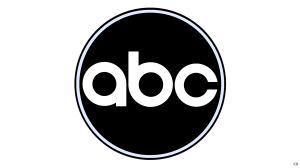As we head into 2017, there will be an embarrassment of riches for comic book fans on the big and small screens.
Videos by ComicBook.com
Arrow, The Flash, Supergirl, Daredevil, Luke Cage, and Jessica Jones are just the tip of the iceberg on TV, while the Guardians of the Galaxy and the Justice League will both come together in theaters.

Even properties you never thought would see adaptation are getting the treatment, with Marvel promising both a TV series and a feature film centering on The Inhumans, with the TV show’s two-part pilot getting an IMAX theatrical run prior to the show’s debut.
Of course, not every property is suited to being a feature film. In general, both the budgets and expected return on investment are generally high.
What we’re seeing more and more is that Netflix, Amazon, Hulu, and premium cable channels like HBO, Showtime, and Cinemax are coming to the rescue of artists who can’t quite find a niche in feature filmmaking.
Which are the (usually R-rated, but not always) comics we’d like to see kick their major motion picture aspirations to the curb and head to Netflix, Amazon, HBO, or the like?
Read on, and let us know any that we’ve forgotten below.
STRAY BULLETS

David Lapham’s Stray Bullets is one of, if not the, best crime comics ever made, and its over-the-top characterization and violence could not only translate well to the small screen, but the nature of its stories — which aren’t all one continuous narrative but a number of stories set in the same world — could lend itself easily to an American Horror Story or Stranger Things-style anthology series.
BONE

This one might not fit with the rest of the list — which is largely stuff that would benefit from the “no limits, no boundaries” kind of approach that streaming services and premium cable providers can offer — but it would absolutely fit in someplace like Netflix or Amazon, where kids’ shows may not get as much ink as the cult hits for adults, but are every bit as important as a part of the business model.
To see how something like Bone could be best handled, check out Netflix’s Trollhunters, showrun by Hellboy‘s Guillermo del Toro and Arrow‘s Marc Guggenheim, which managed to retain all-ages charm without losing the adults in the audience.
STRANGERS IN PARADISE

In an era where the romance comic is all but dead, Strangers in Paradise — launched almost 25 years ago — became an indie staple and one of the best-reviewed comics of the ’90s when it was released.
The story centered on three lovable characters who were trying to have a simple life in spite of their own complicated backstories which kept coming back to haunt them. At the center of it was Katina Choovanski (“Katchoo”), a young lesbian who had fallen in love with her (straight) best friend in high school and decided that being with your soulmate platonically was better than being with anybody else romantically. Of course, there’s also the matter of David, who feels the same way about Katchoo, and Francine (the best friend in question), who feels the tug of something more with Katchoo but can’t quite commit to what that means for her life plans.
If that sounds a bit CW-soap opera-y for you, trust us: the subplots include slasher film-style murder, organized crime, ’50s pinup girl porn, and more. This is one of the best American comic books ever produced, and it’s no coincidence that every few years, somebody buys up the movie rights and tries to make a run at it.
VIOLENT MESSIAHS

This one’s a little less obvious than most of the others on the list, primarily becuase not a lot of people remember Violent Messiahs.
The short-lived series was published by Image in the early 2000s (after having been created for a smaller publisher in the ’90s and then scrapped). From Joshua Dysart, who would go on to write Harbinger and Unknown Soldier (among many other things) for mainstream publishers, and artist Tone Rodriguez, it centers on a police force struggling to bring in costumed vigilantes while one of them — Citizen Pain — hunts a serial killer called The Family Man, who kills bad parents.
This isn’t a story where there are a lot of fantastical powers; it would be right at home in the vein of Netflix’s Defenders family of shows. Lots of blood, lots of leather, and a look at a kind of dark city and its police force as everything feels like it’s starting to come apart at the seams…but hasn’t quite yet.
The series isn’t entirely forgotten — years after the original Image run, both volumes of the book got a reprint at IDW in 2008-2009 — but in all likelihood the cool high concept and sexy visuals of this comic would be a revelation to most people.
TOMBOY

A gruesome revenge thriller with supernatural undertones and a built-in mythology that would allow a TV adaptation to tell stories beyond just that of the comic, which will end its all-too-short run in early 2017, Action Lab’s Tomboy is basically built to be adapted.
Tomboy centers on Addison, a high school girl who begins a bloody rampage after her best friend is killed by a pair of dirty cops. To tell you more than that might spoil the fun, since the series is so short and still on the stands. You should totally pick it up.
LOVE AND ROCKETS

You want consistency? Love and Rockets has been one of the most critically-acclaimed comics in existence ever since its debut in 1981.
Created by the Hernandez brothers (Gilbert, Jaime, and Mario), Love & Rockets is arguably both the easiest and the hardest thing to adapt and may be the thing on this list that most needs a feature film or at least anthology treatment so that each story gets its just due.
The brothers sometimes work together, but often apart, and all tell stories in a shared world but they range from romance to mysticism to slice of life. Because of its nature — often created as standalone stories or one-shots — it’s the hardest to satisfactorily explain, but because of the down to earth tone of most of the material it would be the easiest to shoot.
If you’ve never read Love and Rockets, start. There’s a lot of material, and it’s super daunting, so publisher Fantagraphics has put together this handy guide. It’s helpful; trust us.
LUTHER STRODE

If you take Wes Craven, Quentin Tarantino, and the creators of Chuck, throw them all in a blender…you might have an approximation of the amount of blood in the first few pages of Luther Strode.
This is an over-the-top, ultraviolent comic…but the characters are so likable and so easy to sympathize with that you avoid that whole problem of the over-the-top antihero becoming icky becuase of the psychosis. You feel for Luther, Petra, and company every step of the way.
The fact that Tradd Moore’s art is so stylized and bloody, and the comic itself is so violent and cluttered with pop culture references and the like, has kept it from being seen as “high art,” but the trilogy of Luther Strode miniseries from Image are probably some of the best and most underappreciated comics of the last decade. Justin Jordan’s dialogue is always spot-on and the art may be “stylized,” but it’s exactly in the style this story needs.
AMELIA COLE

As in so many other works of fantasy, there is a magical world and a non-magical world in Amelia Cole.
Then there’s an unknown world where the two are blended. Mages live alongside non-mages and are subject to the whims of magic, and while it’s far from a perfect setup, it’s only going to get worse once some very bad, very dark forces from the magical world start trying to creep in.
Amelia Cole, on the other hand, has found herself there largely by accident…but she may be the Unknown World’s only hope.
This Monkeybrain comic (available in trades from IDW, who will publish an omnibus in the spring) is one of the most enjoyable reads in recent memory and we were damn sorry to see it go when it ended earlier this year. We’d love to see it pop up on TV.
THE INVISIBLES

What’s good enough for The Matrix is good enough for TV.
The Invisibles, Grant Morrison’s time-hopping, acid-tripping, authority-bombing story about a cell of anarchist terrorists who are actually the good guys on the battle lines against authoritarian control has always been one of the weirder and more fascinating pieces of work from a weird and fascinating writer.
The way Morrison bends time and space in the series could make for very interesting TV, or it could prove virtually un-adaptable and turn out to be one of those things that can only be done in comics.
TRANSMETROPOLITAN
So much of Transmetropolitan‘s ideas about the then-near-future have come true it’s difficult to imagine that it would be as shocking as it was when it was published in the comics — but the overarching story and characterization still hold up.
Transmetropolitan, published from 1997 until 2002, took place in a near-future dystopian tale where corporate power was largely unchecked, both political parties ran candidates that were loathed by a generally-indifferent and fame-obsessed public, and customized media was delivered to screens everywhere featuring, among other things, wildly inaccurate news reports designed to serve the interests of the media’s ownership and constant takeover ads that you couldn’t navigate away from.
So…yeah. Other than makers, which would actually be super-convenient, we’re kind of already there.

Pictured Above: Spider Jerusalem meets with the President.
The series’ lead character, Spider Jerusalem, was kind of the “last honest journalist” in a world of corporate-owned cronies — and while he was pumped up on drugs and ranting angrily most of the time, he seemed to make everyone around him better. The heart of the book was his long-running grudge against the President of the United States who, blinded by his hatred for the other candidate, he helped to get elected.
It could certainly be interesting to see how somebody would adapt Transmet in a world where Spider is barely ahead of the cultural and technological curve, but it certainly would be interesting in the current political climate to see how audiences responded to his inermittently, deranged, heartwarming and insightful rants.









